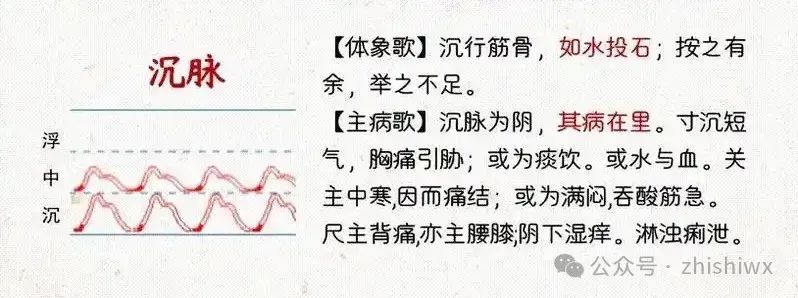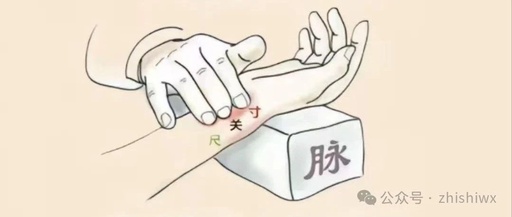
In Traditional Chinese Medicine (TCM), pulse diagnosis is akin to a profound hall of wisdom, where each pulse type serves as a delicate key that unlocks the mysteries of health and disease within the human body.
Now, we will delve into the unique ‘whisperer’ known as the Chen Mai (Deep Pulse), which acts as a messenger from deep within the body, conveying hidden truths to the practitioner through its distinctive rhythmic beats.

1
The Elusive Pulse: The Unique ‘Personality’ of Chen Mai
The Chen Mai is like a playful and cunning sprite, preferring to engage the practitioner in a uniquely creative game of ‘hide and seek.’
When the practitioner gently places their fingers on the patient’s pulse, it is as if they are softly asking, “Where are you?”
At this moment, the Chen Mai quietly conceals itself, making it nearly impossible to detect with a light touch, as if intentionally evading the practitioner.
However, with professional acuity and persistence, the practitioner, like a treasure hunter, gradually increases pressure to explore deeper.
Indeed, just as one might discover treasures at the bottom of a deep lake, with firm pressure, the steady and powerful beats of the pulse become distinctly palpable.
This is the hallmark characteristic of the Chen Mai—”light touch yields no response, firm pressure reveals the pulse”—which tests the practitioner’s patience and insight while showcasing its own mysterious personality.
2
The ‘Navigator’ of Disease: The Synergy of Chen Mai and Internal Patterns
Within the vast and profound theoretical system of TCM, the Chen Mai plays a crucial role, particularly in its subtle and close relationship with internal patterns.
Internal patterns can be likened to external pathogens that breach the body’s defenses, penetrating deeply and causing chaos in the core areas of the organs and blood.
For instance, when the body inadvertently contracts wind-cold, the initial pulse is often Fu Mai (Floating Pulse), akin to an enemy provocatively challenging at the borders, easily detectable.
However, if effective measures to expel the pathogen are not taken promptly, the external pathogen can gallop like a runaway horse into the internal organs, disrupting the flow of qi and blood, much like a stone thrown into a calm lake creating ripples.
At this point, the pulse will evolve in accordance with the progression of the illness, transitioning from Fu Mai to Chen Mai.
This change serves as an urgent signal from the Chen Mai to the practitioner: “Attention! The enemy has penetrated deep into the territory; the situation is critical, immediate investigation and response are required!”
Based on this signal, the practitioner, like an experienced detective, follows the clues provided by the Chen Mai, unraveling the complexities of the body’s internal issues to formulate precise and effective treatment plans to expel the pathogens and restore harmony and balance to the body.
3
The ‘Thermometer’ of Cold Patterns: The Intimate Relationship between Chen Mai and Cold Patterns
The Chen Mai is not only a loyal companion to internal patterns but also has intricate connections with cold patterns.
In TCM theory, the body’s yang qi is regarded as the essence of life, akin to the sun shining brightly in the sky, providing warmth and vitality, propelling qi and blood to flow smoothly like a river within the body.
Once the body’s yang qi is weakened, it is as if the sun is obscured by heavy clouds, diminishing its light and warmth, causing qi and blood to stagnate like a boat losing its power, slowly retracting inward. This change is reflected in the pulse as the emergence of the Chen Mai.
For individuals with a yang deficiency constitution, they seem to be trapped in a prolonged winter, with cold hands and feet year-round, as if bound by the chains of cold.
At this time, if one touches their pulse, it often presents characteristics of being deep, thin, and weak.
This Chen Mai acts as a precise ‘thermometer,’ clearly indicating the deficiency of yang qi and the rampant cold pathogens within the body.
By interpreting this pulse, the practitioner can gain insight into the patient’s internal cold-heat dynamics and apply warming yang and dispelling cold methods to help reignite the ‘fire of life’ within the patient, restoring smooth flow of qi and blood, and revitalizing health and vitality.
The Chen Mai, as the health ‘whispers’ from deep within the body, provides crucial clues for TCM diagnosis of diseases through its unique pulse characteristics and rich diagnostic significance.
Through precise interpretation of the information contained in the Chen Mai and other pulse types, TCM practitioners can gain a deeper understanding of the physiological and pathological changes within the body, providing a scientific basis for personalized treatment and health maintenance.
It is hoped that readers, through understanding the Chen Mai, can appreciate the profound depth of TCM culture and feel the wisdom and charm that TCM embodies in maintaining human health.

